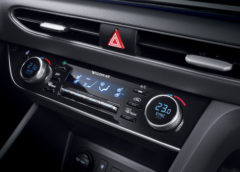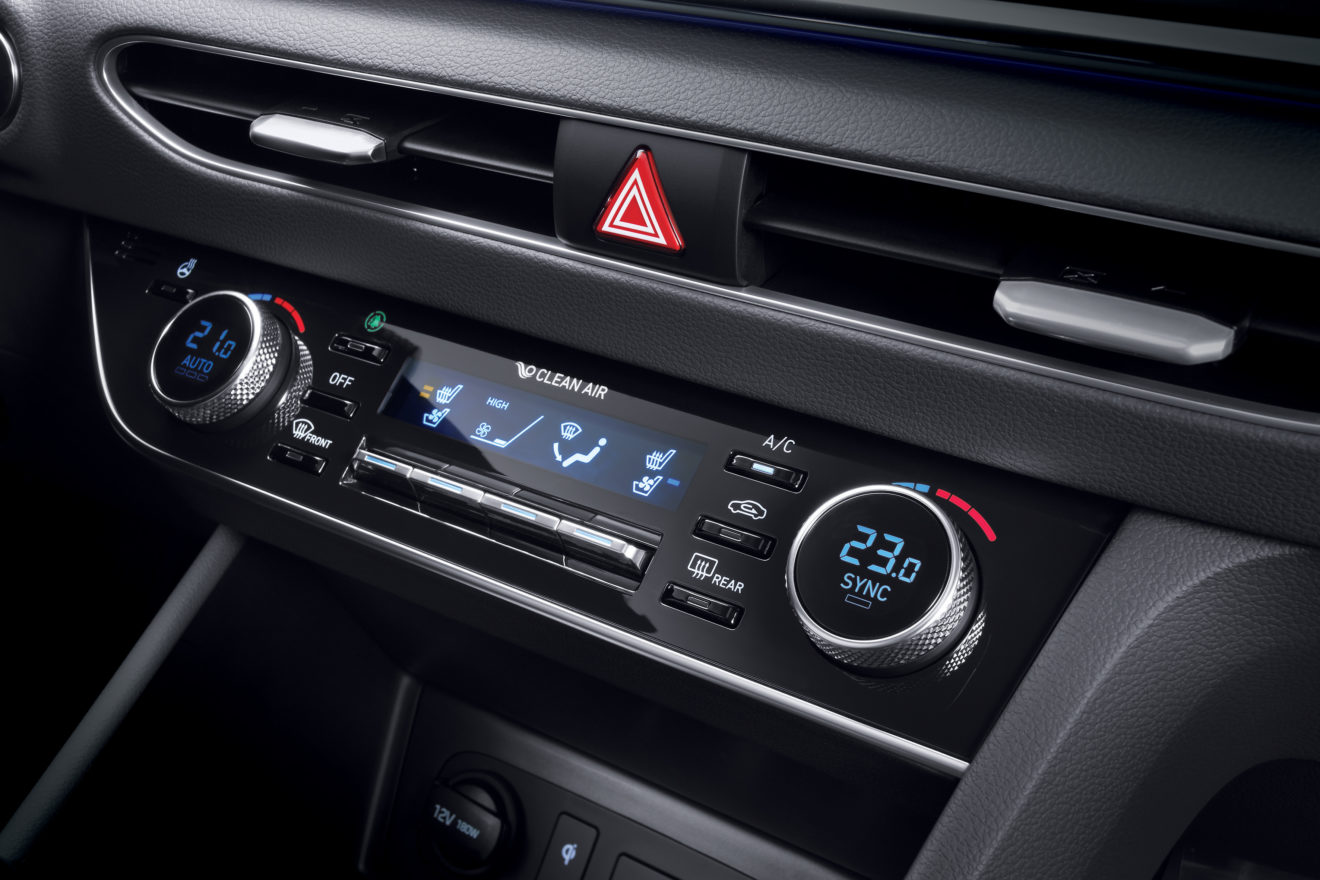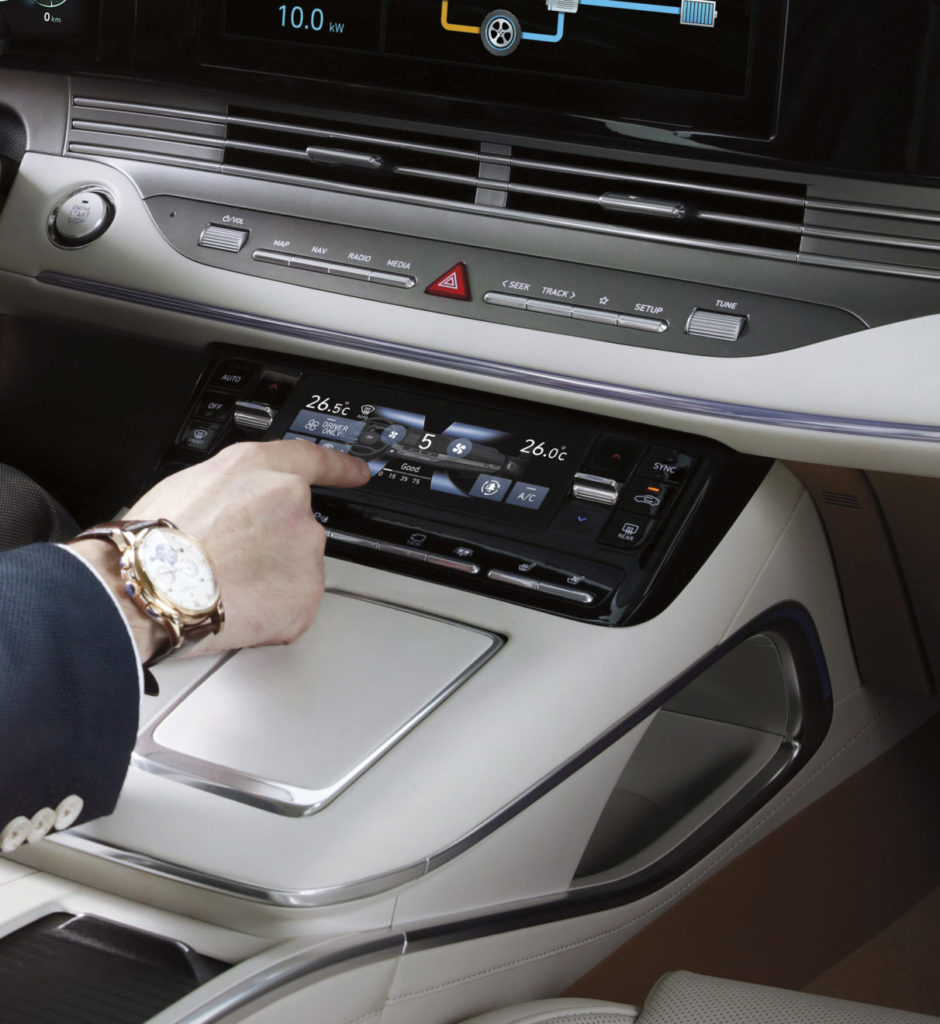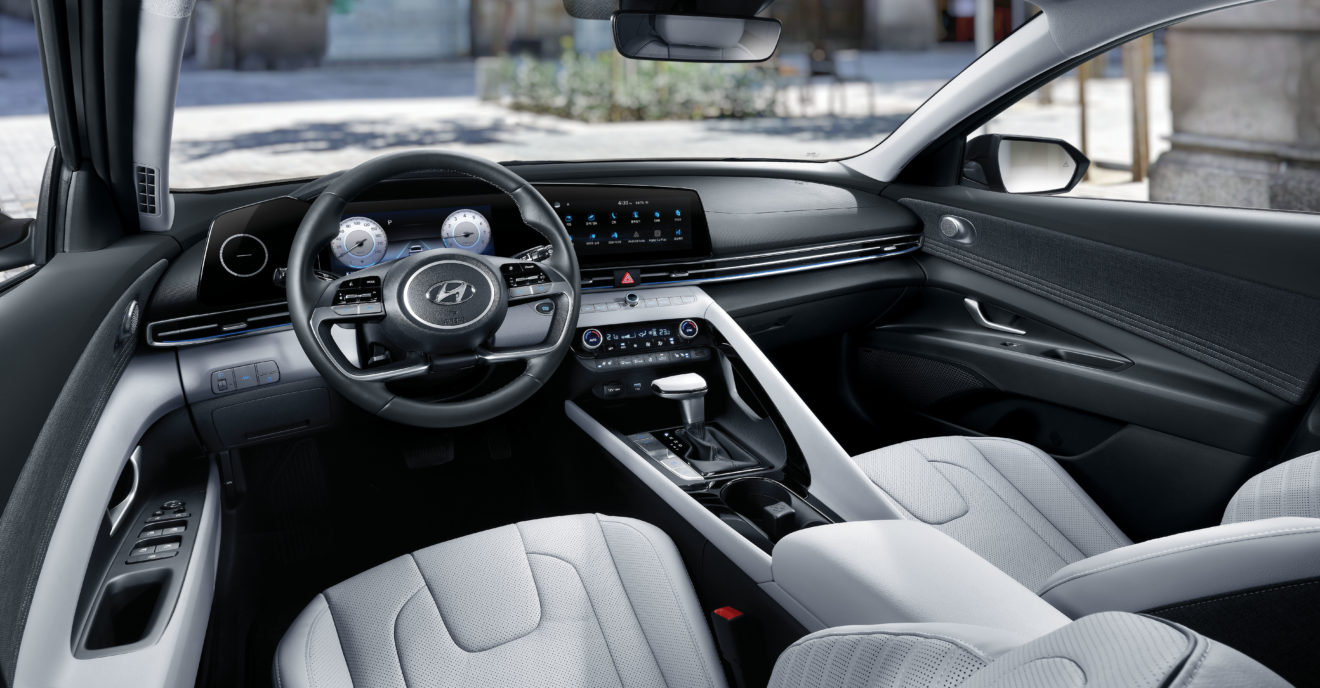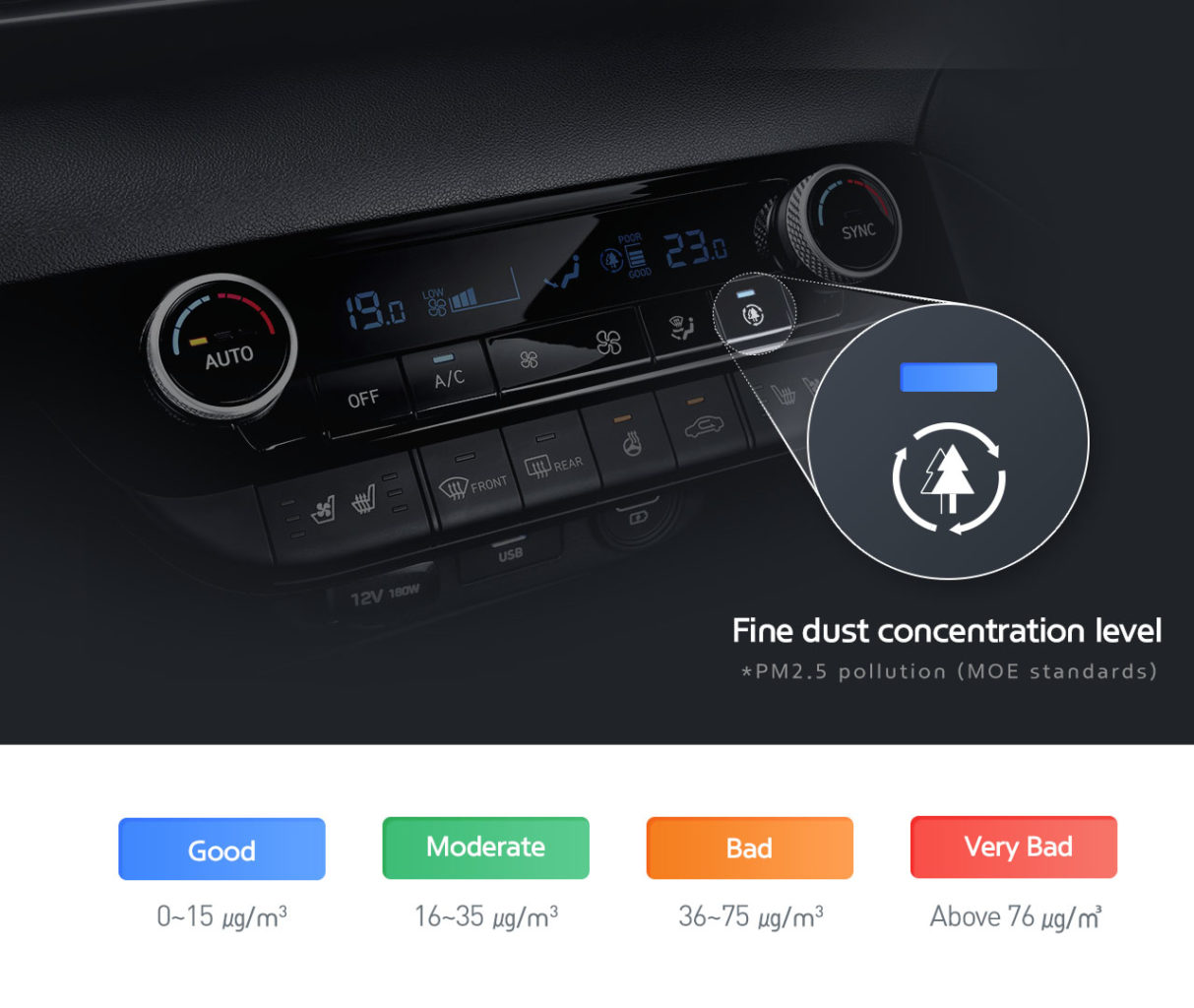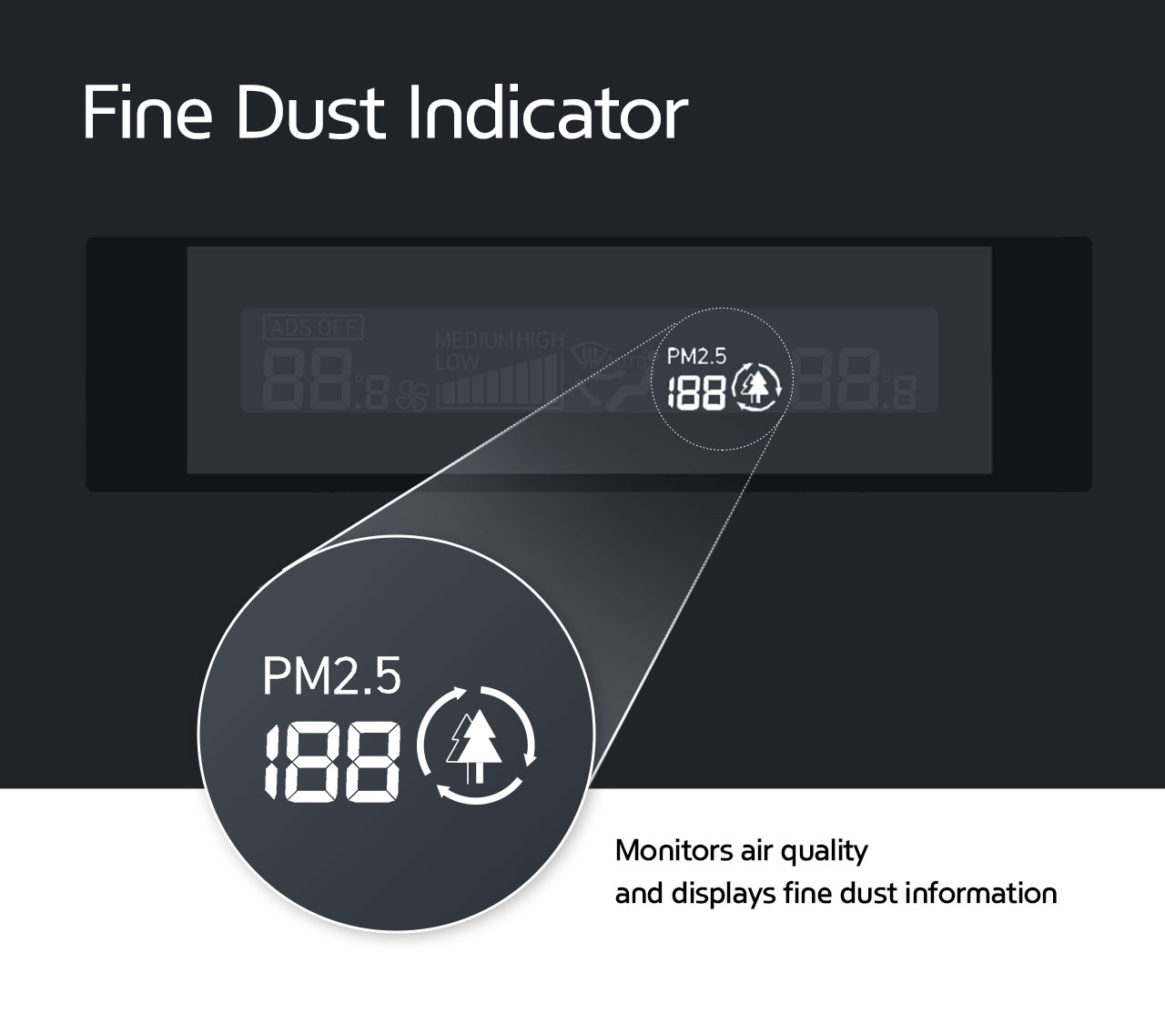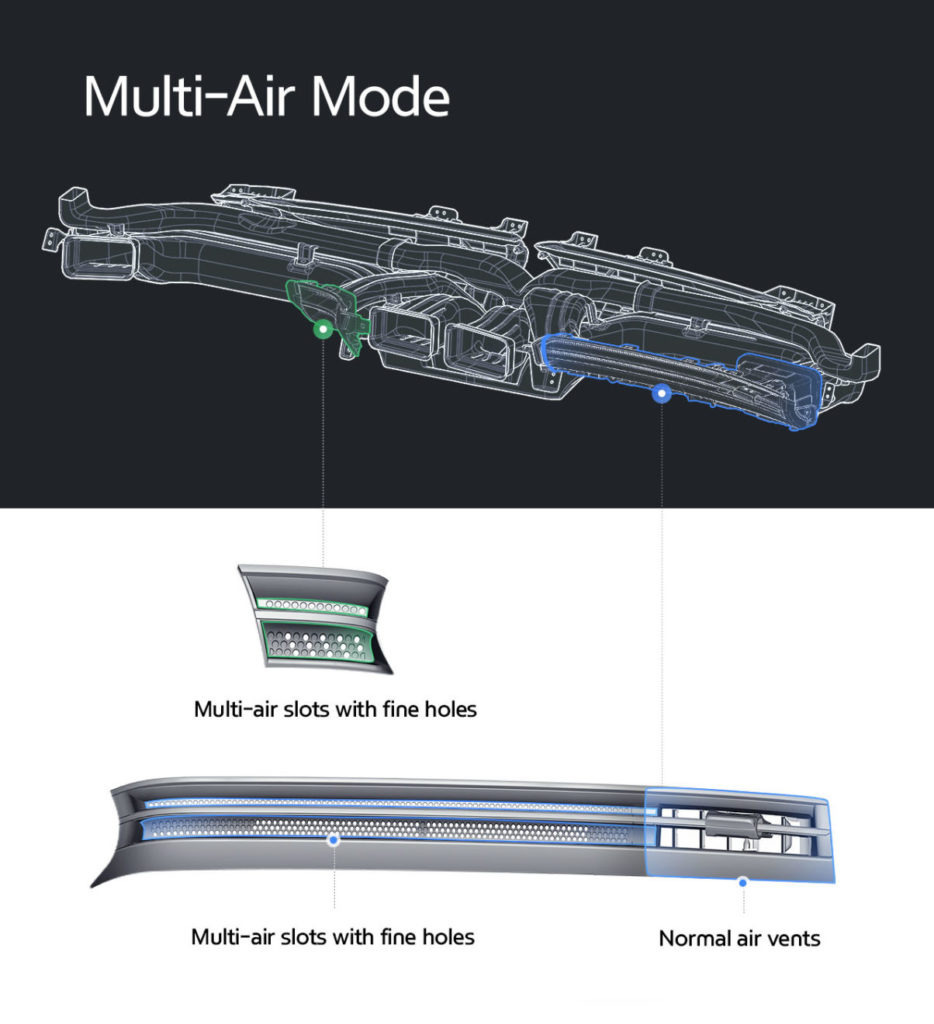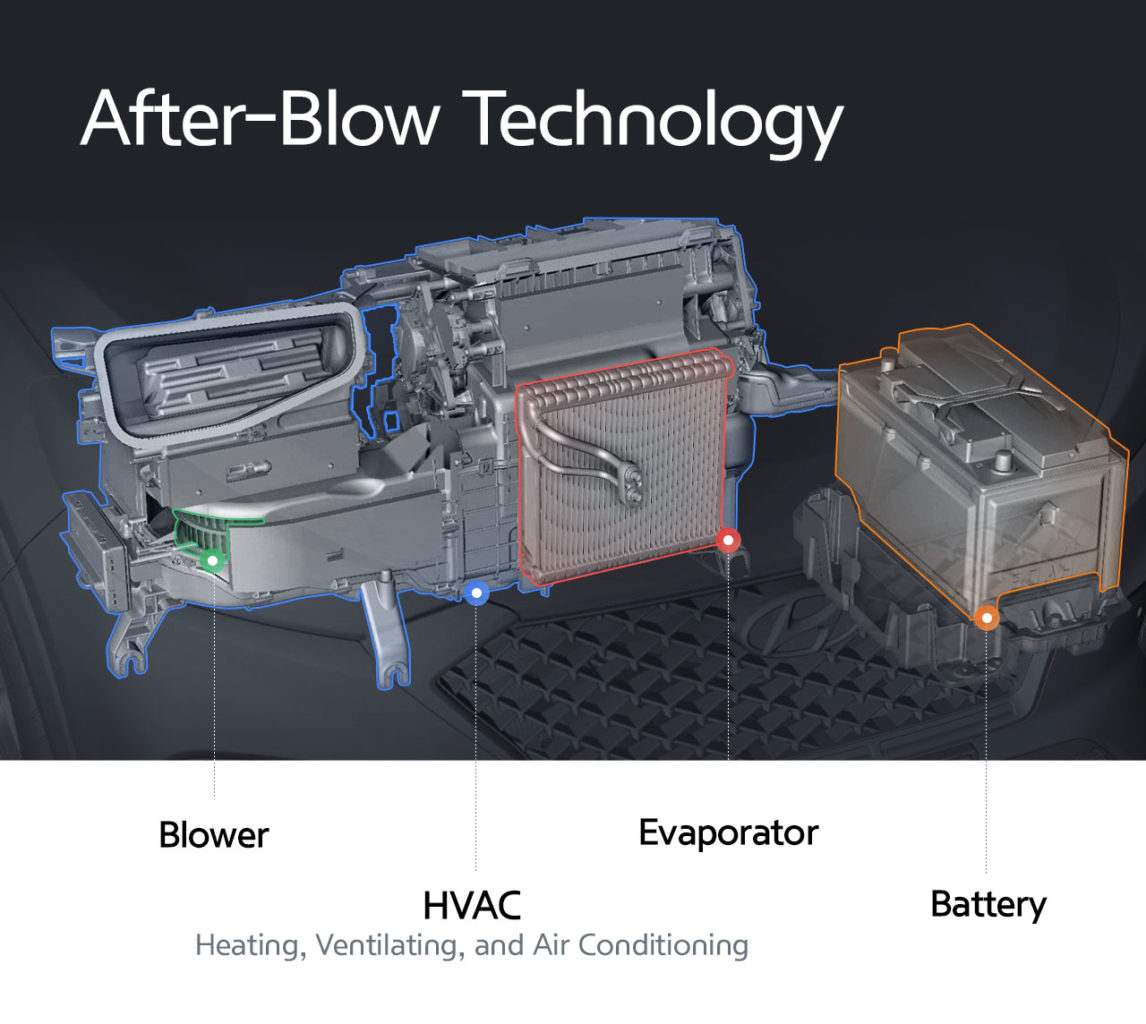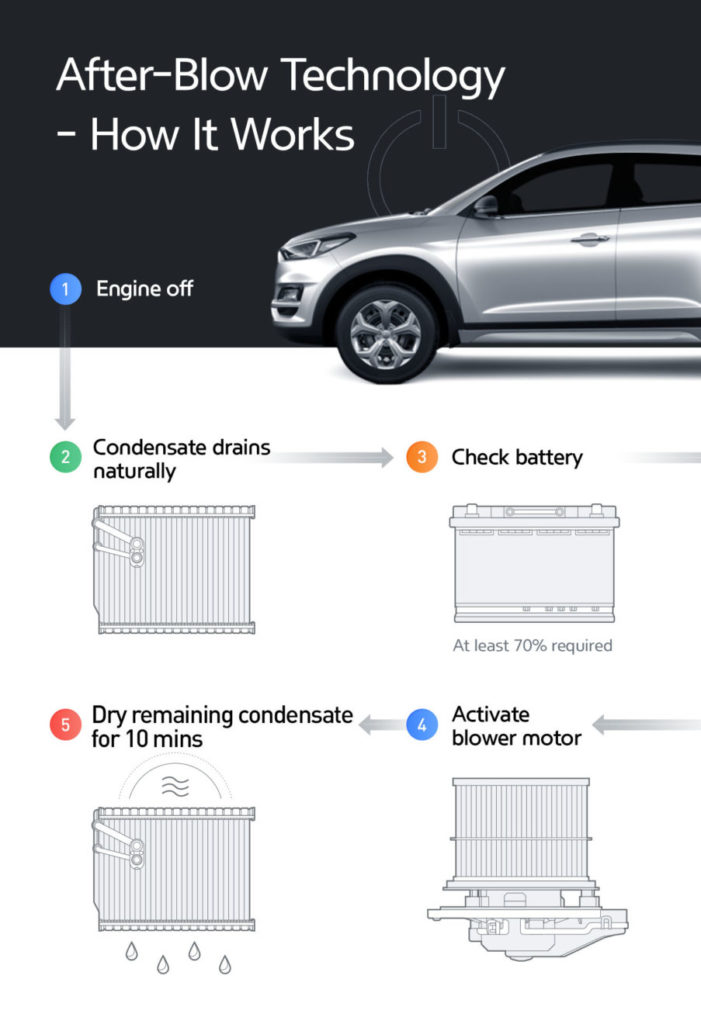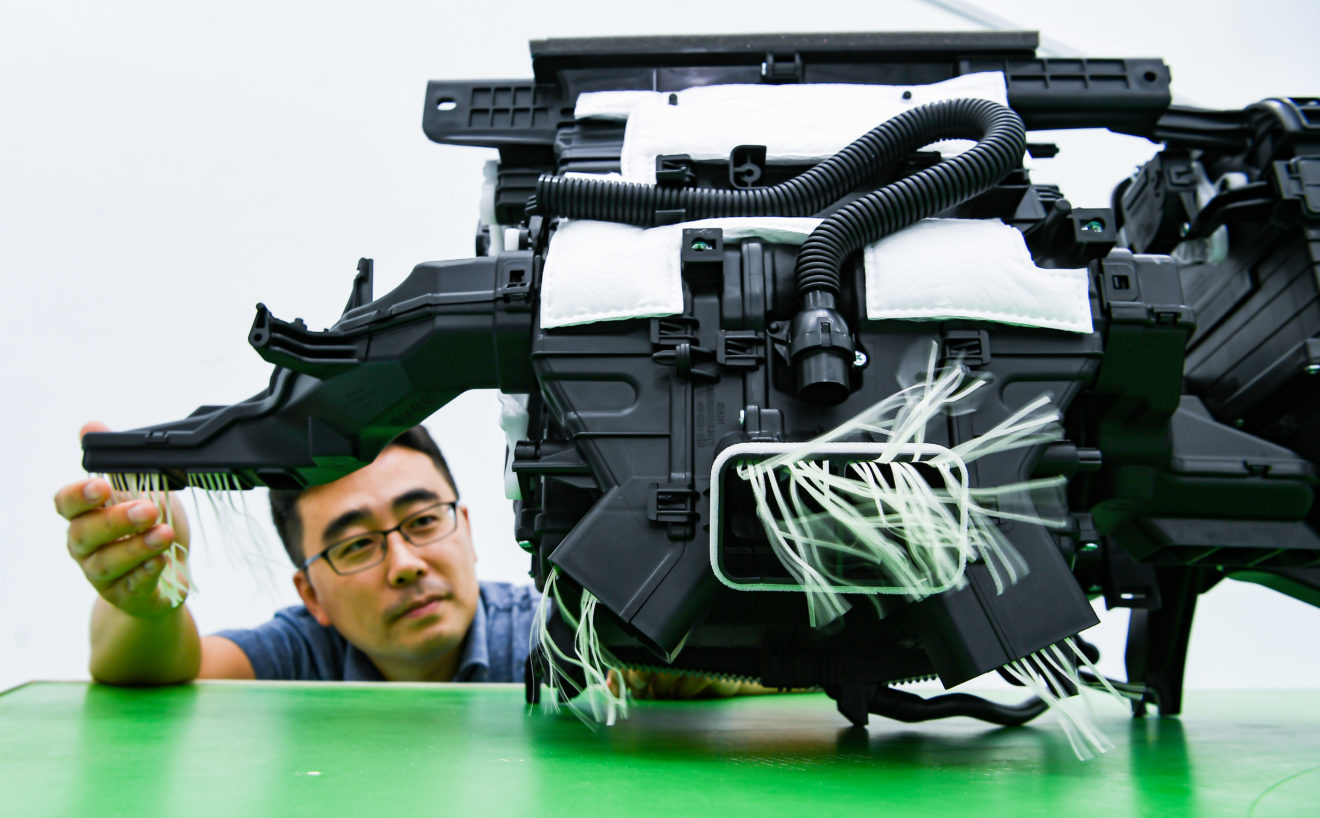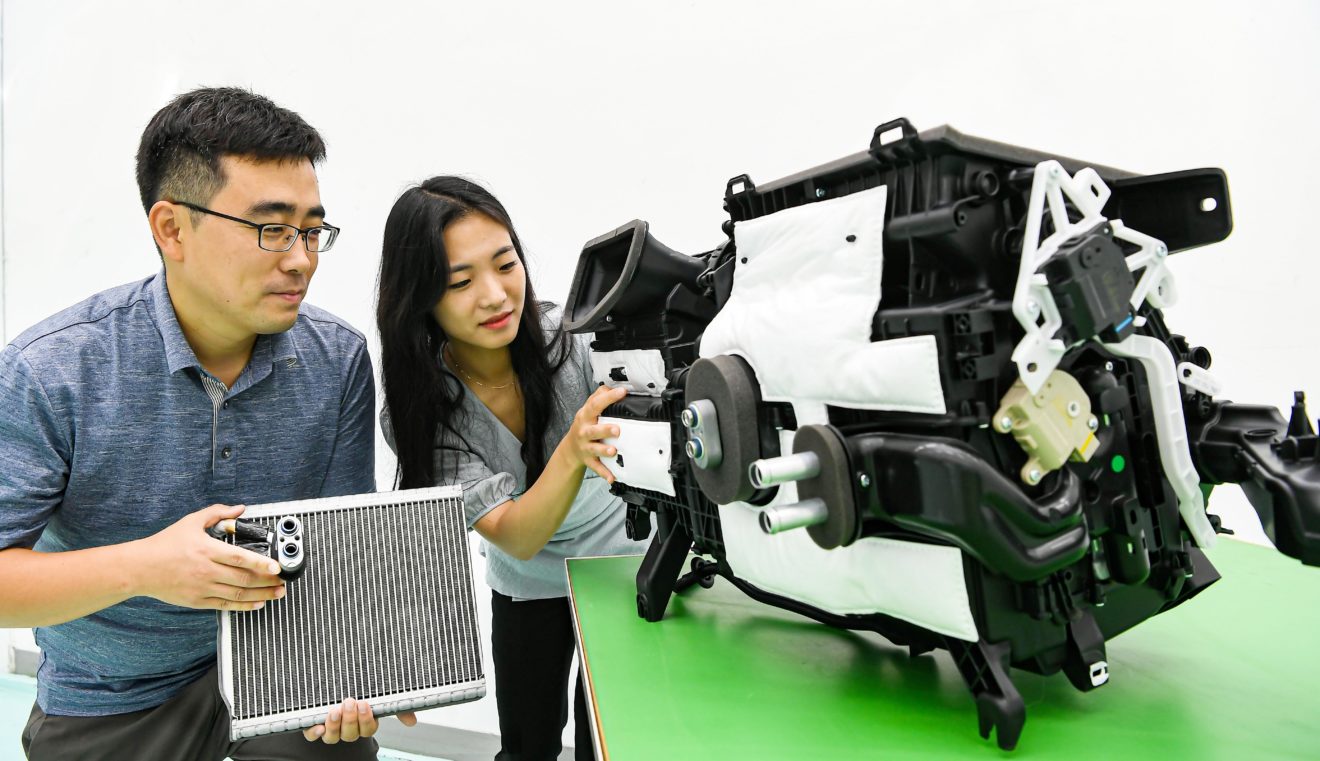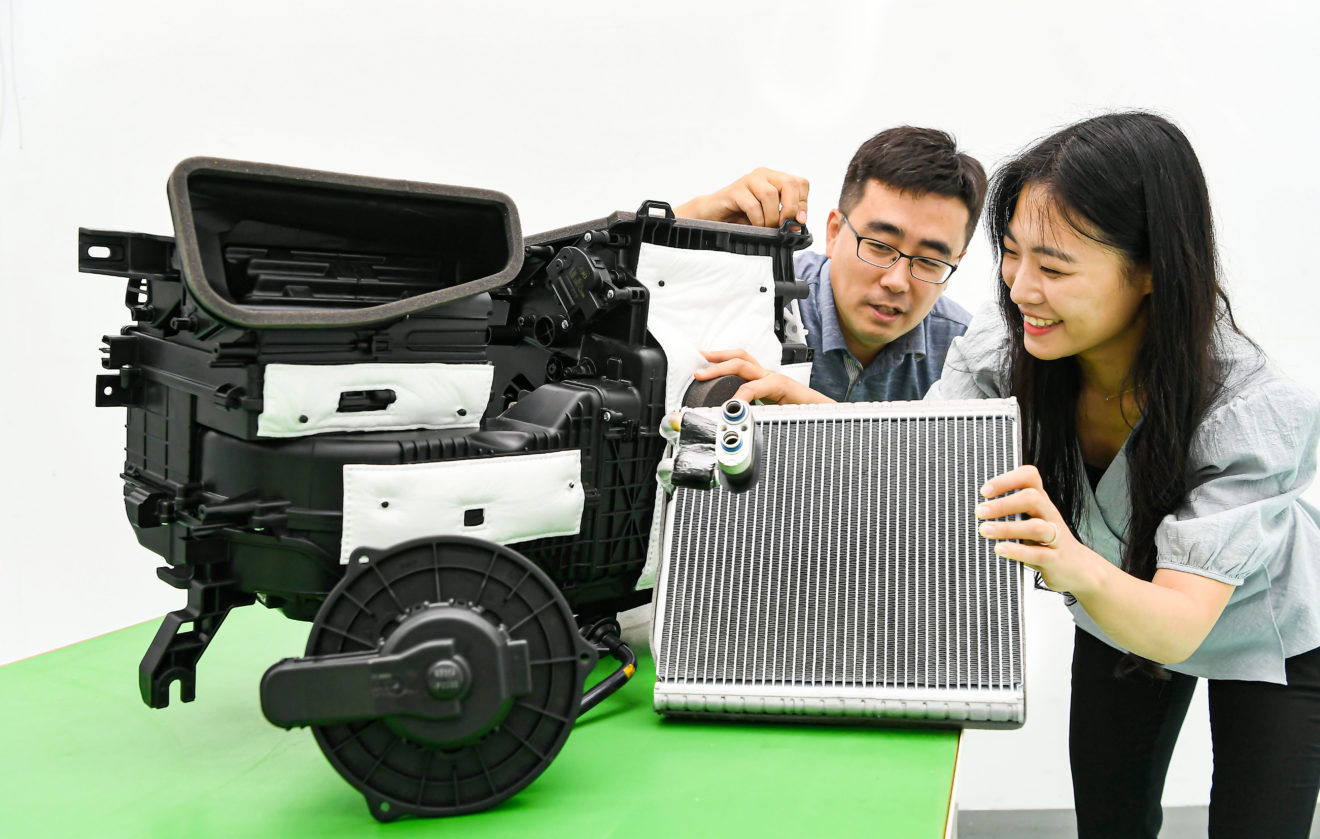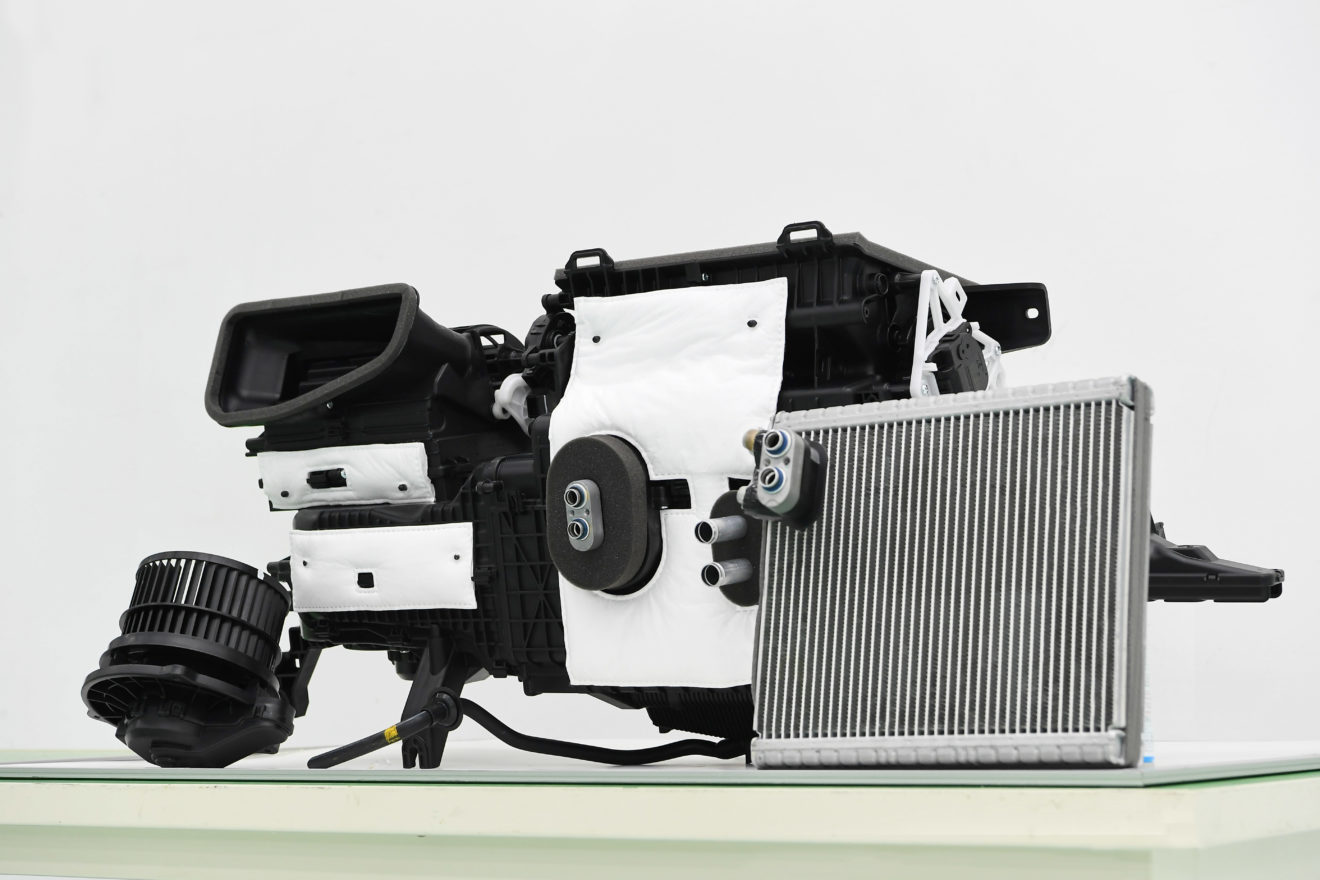- Three technologies developed to manage air quality in vehicles
- ‘After-Blow’ keeps evaporator dry to suppress mold growth
- ‘Multi-Air Mode’ disperses air to reduce direct air contact
- ‘Fine Dust Indicator’ displays air quality information in real time
- Technologies will be introduced on upcoming new models
SEOUL, July 27, 2020 – Hyundai Motor Group announced today new technologies to improve the quality of air in vehicles and create a more pleasant indoor environment for customers.
Recognizing the growing concern about air quality, the Group unveiled three new air-conditioning technologies – ‘After-Blow’, ‘Multi-Air Mode’, and ‘Fine Dust Indicator’. The technologies will be introduced initially on select models in Korea and expand to upcoming Hyundai, Kia and Genesis vehicles worldwide in the future.
After-Blow Technology
‘After-Blow’ dries the condensate on the evaporator and suppresses mold growth in the air-conditioning system, which can cause an odor during hot weather.
After the engine is turned off and the condensate on the evaporator drains naturally for about 30 minutes, ‘After-Blow’ activates for 10 minutes to dry the evaporator and any condensate leftover in the air passage. The air-conditioning system automatically allows influx of outside air during this time to prevent humidity from building up.
The technology uses an intelligent battery sensor (IBS) to monitor the battery and stops functioning when the battery is low, allaying any concerns about batter discharge. It also de-activates when the air conditioning system is not in use for a certain period of time, or when the outside temperature is low.
Multi-Air Mode Technology
‘Multi-Air Mode’ uses multiple vents for air conditioning and heating to create a more pleasant indoor environment with gentle wind.
When this mode is activated, the air is dispersed to the newly added multi-air slots in the driver and passenger seats in addition to the normal air vents. The overall wind volume remains the same, but the dispersion of wind reduces direct air contact and softens the air.
This mode can be switched on and off based on the preference of the driver.
Fine Dust Indicator Technology
‘Fine Dust Indicator’ measures the air inside the vehicle in real time and delivers digitized information, allowing the driver to better manage the air quality.
The indicator displays the concentration and pollution level of ultrafine particles (PM 2.5) inside the vehicle using integer numbers and colors for better visibility to the user: blue for 0 to 15 μg/m3, green for 16 to 35 μg/m3, orange for 36 to 75 μg/m3, and red for 76 μg/m3 or higher.
If the level of ultrafine particles exceeds 36 μg /m3 while the function is active, the air-cleaning mode will run to purify the air in the vehicle. The air-cleaning system automatically sets the air volume between 3 and 8 and switches to air-recirculation mode and activates the air conditioning system to reduce indoor humidity. If the air does not improve in air-cleaning mode, it can also serve as a reminder to the driver to replace air-conditioner filters or to clean contaminated seats and mats.
For more information about how these technologies work, please visit the following video link: https://youtu.be/8bOwyuUuOTo.
Source: Hyundai
Nissan unveils Invisible-to-Visible technology concept at CES
NASA, NOAA Announce Opportunity for Media to Preview Airborne Air Quality Study

